#steve jobs keynote
Text
2007-01-09 MacBreak Weekly Meetup - San Francisco, CA
2007-01-09 MACBREAK WEEKLY MEETUP – SAN FRANCISCO CA
2007-01-09 21ST AMENDMENT BREWERY – SAN FRANCISCO CA. I got a chance to attend a podcast meetup for one of my favorite podcasts and see the folks in person that I’ve been listening to, in some cases, for years. Fun.
Click here to Return to: Macworld Expo (2007) ||| Macworld Expo Floor ||| Around Town ||| Travels
JBB’s Media Projects…
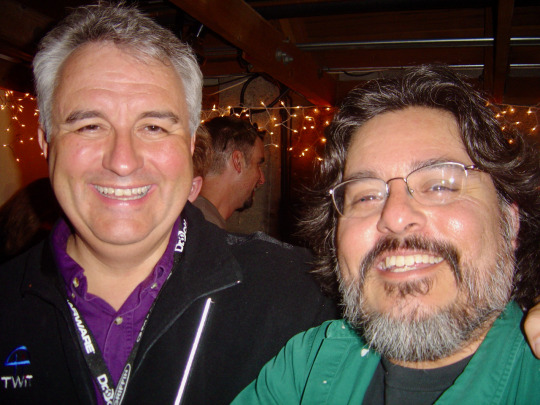
View On WordPress
#2007#apple computer#iphone#macintosh#macworld#macworld expo 2007#nerd culture#nerd history#steve jobs#steve jobs keynote#travels
0 notes
Text
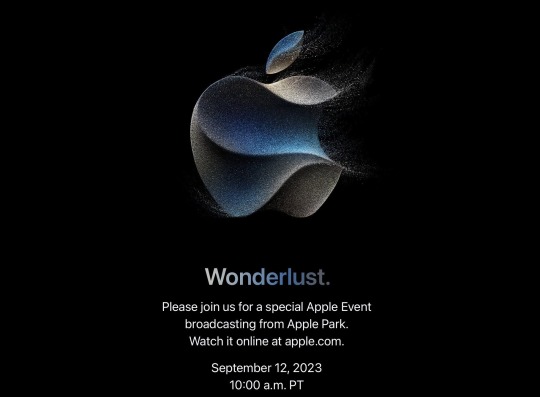
So who’s watching it with me? I’m serious! I could look around to set up something that we can all chat on or if you have ideas let me know!! Does tumblr have anything for this? lol
@staff I’m a product designer specialised in conversational environments 👀
18:00 BST / 19:00 UTC+1
ig: cheri.png
#apple#not y2k#but still a#tech blog#the robot girls have to be informed#watching apple keynotes with Steve Jobs at the age of 13 is the reason I’m like this#I used to live tweet it into the ether and message about it with one of my friends so maybe it could be fun with multiple likeminded ppl:’)#I’m such an idiot nerdy girl that I used to daydream about watching it with a bf but incred obviously that never happened HAHAHA#it’s nice to confess embarrassing things in the tags lol sorry#tech#techcore#apple event#technology#cybercore
38 notes
·
View notes
Text
Steve Jobs' 2007 keynote
This is a generation reaching a climax. They also got stuck there.
See how.
youtube
People could hardly contain their Christmas excitement.
They already wanted to leave and go out and get it. Instead, the experience went interestingly.
They stayed in their seat.
The experience was as interesting
as any movie, as exciting as any stage performance.
They sat with each others' burps, farts, coughs, etc.,
because they could hardly believe that this was all happening, at once. A release.
Something needed for many, I'll admit. It came from somewhere.
Apple did it, in several ways.
Showing an example of how to be everything at once, that people ask for.
So, here we are.
Todays' appointments, often met, on a location
where an iPhone passes through the door with people.
Oftentimes, it's this. Becomes something you watch TV on.
Your neck might crane. You might be slowed down.
You might have to
He spoke things that still have a point, today.
Because he thought of this two years ago, here, in 2024. After he's passed away.
Steve Jobs is still affecting the world, now, and he's since gone elsewhere. The late Steve Jobs.
He's working his magic from beyond the grave.
Consider this.
If you swapped out things that he's doing in 2007
with things that are being done now, you can -still- innovate!
Especially in the format of the Keynote presentation. When you watch the presentation,
you want to stay.
He's able to be, here,
while we leave. The Earth, eventually. Left by us,
it might be in a state that's worse. I think Steve Jobs would want less pollution.
Less landfill. Less of the cracked screens that are thrown, ending up on the road,
or into a bin. I think he'd want us to realize what we have, now,
that he may have put into our hands. He seems like a worker who thinks. Bill Gates,
also, has done this, too. We left him in a place
where, mostly, he's become fodder for a mill of conspiracy theories. Here's now.
We have that. We have ourselves.
Will we be?
Kentaro Rants
February 22nd, 2024
9 PM EST
#steve jobs#macworld#keynote#apple keynote#apple#apple inc#apple computer#2007#2000s#throwback#nostalgia#2000s nostalgia#00s#Youtube
2 notes
·
View notes
Text
What's up, learners? It's your boy, the one and only LearnFromJobs, here to school you on the art of innovation and making a dent in the universe. You know who else was all about that life? The late, great Steve Jobs.
Now, I know what you're thinking: "Jobs? That guy who made overpriced phones and wore turtlenecks like it was his job?" But hear me out, people. The man was a genius. A legend. A mythic figure in the world of tech.
You might not know this, but Jobs wasn't always the mastermind behind Apple's success. In fact, he got fired from the company he helped start. But did he let that defeat him? Hell no. He went on to create Pixar, revolutionize the music industry with the iPod, and completely change the game with the iPhone.
And let's not forget his signature move: the keynote presentation. Jobs knew how to work a stage like nobody's business. He could make you believe that a new phone was the greatest thing to ever grace the earth. That's the power of storytelling, people.
But it wasn't just about the products. Jobs was all about the user experience. He believed in simplicity, elegance, and intuitive design. He once said, "Design is not just what it looks like and feels like. Design is how it works." And boy, did it work.
So what can we learn from Jobs? Well, for starters, never give up. Even when things seem bleak, keep pushing forward. And always keep the user in mind. Don't just make something that looks cool; make something that makes people's lives better.
And last but not least, never underestimate the power of a good black turtleneck. Just kidding. Maybe.
160 notes
·
View notes
Text
I worked from 10 AM until 3 AM on one single keynote slide, woke up at 7 AM this morning and realized it was wrong, so tossed it out entirely and re-created it. And now it’s perfect. Or close. My singular focus on making some thing perfect can get a little crazy - and what’s even weirder, hardly anyone is going to look at that slide. It’s my own internal plan for my small team. It’s not like I have to present it. It just is helping me shape and simplify the way that I think, and the aesthetics of the information have to be really clean, so I can think cleanly.
Steve Jobs once told the story about why the details when no one’s looking.
“When you’re a carpenter making a beautiful chest of drawers, you’re not going to use a piece of plywood on the back, even though it faces the wall and nobody will ever see it. You’ll know it’s there, so you’re going to use a beautiful piece of wood on the back. For you to sleep well at night, the aesthetic, the quality, has to be carried all the way through.” 
That resonates with me. I used to be pretty performative about work and I still am, of course, because that’s corporate America but there’s also a big part of me that needs the work itself to flow in a clean way because that shows me that I’m thinking cleanly. It’s like a thermometer.
#Feeling like I’m more caught up#another massive push this week and my area will be all caught up and not at risk#It’s worth it to put the time in right now
15 notes
·
View notes
Text
To save the news, repeal the app tax
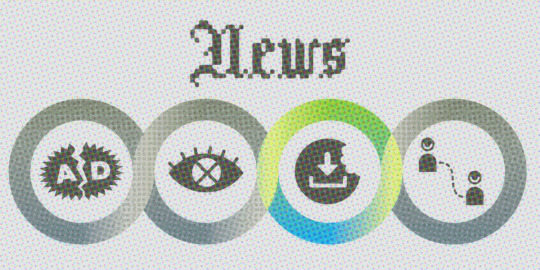
Today (June 7), I’m keynoting the Re:publica conference in Berlin.
Tomorrow (June 8) at 8PM, I’m at Otherland Books in Berlin with my novel Red Team Blues.

Big Tech steals from the news, but what it steals is money, not content. Talking about the news, excerpting it, linking to it, quoting it — these are all beneficial, normal news activities. If you can’t talk about the news, it’s not news — it’s a secret.
But tech does steal from news. A variety of monopolistic tricks allows tech to interpose itself between reporters, publishers and outlets, and the audiences they serve. By creating chokepoints between the news and its audience, tech can extract gigantic sums from the news.
And because the news itself is dominated by the same kinds of extractive, vicious, gigantic corporations, the shit flows downhill: the first victims of attacks on news profitability are news workers — reporters, technical staff, illustrators, photographers. A news outlet has to be really starving before it turns to the money claimed by vulture capitalists who buy distressed debt, or hedge funds who roll up papers, or wealthy owners.
Anything that can’t go on forever eventually stops. Tech’s ripoffs have reached a breaking point, and there’s a broad coalition of journalists, media companies, audiences and politicians ready to do something about this. Now the question is: what should we do?
Whatever we do it should:
Maintain broad access to the news;
Make it easier for new news outlets to pop up;
Make it easier for new tech outlets that carry the news to pop up, too.
It shouldn’t simply transfer funds to bond holders who own newspaper debt, or shareholders of media companies, or billionaire dilettante news proprietors. It shouldn’t make the news and tech into “partners”: we want the press to hold tech to account, not join forces with it.
A month ago, EFF and I started publishing a five-part series of policy prescriptions “saving the news from tech.” Part one was the “curtain raiser,” setting up the whole program:
https://www.eff.org/deeplinks/2023/04/saving-news-big-tech
Each week since, I’ve published a specific policy recommendation. The first one was breaking up the ad-tech industry, on the lines suggested by Senator Mike Lee’s AMERICA Act:
https://www.eff.org/deeplinks/2023/05/save-news-we-must-shatter-ad-tech
Next was passing comprehensive privacy law, which would kill off surveillance ads and force a switch to “contextual ads” (ads based on what you’re looking at, not who you are):
https://www.eff.org/deeplinks/2023/05/save-news-we-must-ban-surveillance-advertising
Both of these proposals are aimed at reducing the share of ad money claimed by tech, especially the ad-tech duopoly of Google/Meta. Ad-tech claims more than 50% of every ad dollar spent, thanks to their chokepoint on ads. The ad-tech market is a cesspool of fraud, abuse and creepy practices. Fixing ads would make everyone better off, by freeing us all from ubiquitous commercial surveillance, and it would make the news better off, letting the news claim a much larger share of ad revenues, whether they are large media brands or independent reporters covering a niche subject in depth.
This week’s installment turns to subscription revenues. When Steve Jobs launched the Ipad in 2010, he set himself up as a daddy figure for the traumataized press, promising them a return to subscription-based business, with seamless payment processing through the apps in his walled garden:
https://memex.craphound.com/2010/04/01/why-i-wont-buy-an-ipad-and-think-you-shouldnt-either/
But since then, the mobile duopoly of Apple/Google has simply recapitulated the abusive extraction of the ad-tech industry, but for apps. Both companies charge a whopping 30% to process in-app payments, and both companies have strict rules banning app makers from evading this 30% app tax by steering customers to the web to complete payments:
https://www.eff.org/deeplinks/2023/06/save-news-we-must-open-app-stores
The companies — nominally bitter competitors — have nevertheless converged on this 30% vig, allegedly without any anticompetitive collusion. Apple uses Digital Rights Management (DRM) to lock people into using its App Store, threatening anyone who reverse-engineers its devices to add competing stores with five year prison sentences under Section 1201 of the Digital Millennium Copyright Act (DMCA).
Google’s Android does have a facility for “side-loading” apps that aren’t in its app store, but the company uses a web of commercial requirements and technological tricks to prevent a competitor from emerging:
https://theplatformlaw.blog/2023/05/24/why-the-proposed-commitments-offered-by-google-to-the-uk-competition-authority-regarding-in-app-purchases-are-wrong-and-will-make-the-situation-of-app-developers-worse/
The result is a massive transfer from the news to tech: payment processing normally costs 2–3%, but these companies manage to take a 30% bite out of every subscription dollar collected in-app. Some very large outlets like the NY Times can drive readers to sign up on the web and escape the app tax, but the additional friction costs even these large publishers a fortune in lost subscribers — and smaller outlets have even less leverage over readers and are corralled into paying the app tax, making it a regressive tax indeed.
Unrigging the mobile payments market would produce good results far beyond the news, of course. Games publishers, independent creators, and office and productivity app makers would all benefit from no longer having to pay the app tax. And so would their users: these app makers are passing on most of those payment costs to us, and we end up paying them, because there are only two major mobile platforms and they both charge the same app tax.
In the EU, the Digital Markets Act (DMA) will force app stores to open up, paving the way for alternative app stores:
https://www.theverge.com/2022/3/25/22996248/apple-sideloading-apps-store-third-party-eu-dma-requirement
In the US, there’s proposed laws like the Open Apps Markets Act, which is likely to be reintroduced in this legislative session:
https://www.blumenthal.senate.gov/newsroom/press/release/blumenthal-blackburn-and-klobuchar-introduce-bipartisan-antitrust-legislation-to-promote-app-store-competition
The mobile duopoly hate this, of course, and claim that forcing them to permit rival app stores would put users’ security at risk. It’s true that this could happen, but it doesn’t need to: security and openness are compatible:
https://www.schneier.com/essays/archives/2022/01/letter-to-the-us-senate-judiciary-committee-on-app-stores.html
Next week, I’ll conclude the series with a post on applying the end-to-end principle to social media, to prevent platforms from holding a publication’s subscribers hostage in order to extract “boosting” fees from media. Once that’s out, we’re going to gather all these posts into a single, downloadable PDF, suitable for sharing with the news junkies in your life, your friends in the media business, and your elected reps.

If you'd like an essay-formatted version of this thread to read or share, here's a link to it on pluralistic.net, my surveillance-free, ad-free, tracker-free blog:
https://pluralistic.net/2023/06/07/curatorial-vig/#app-tax

[Image ID: EFF's banner for the save news series; the word 'NEWS' appears in pixelated, gothic script in the style of a newspaper masthead. Beneath it in four entwined circles are logos for breaking up ad-tech, ending surveillance ads, opening app stores, and end-to-end delivery. All the icons except for 'open app stores' are greyed out.]
#pluralistic#eu#saving the news#news#app tax#app stores#mobile#copyfight#eff#big tech#antitrust#open app markets act#digital markets act#dma
17 notes
·
View notes
Text
AI voice detection and recognition are becoming more crucial
This Twitter thread shows how far along artificial voices have come. For those who are familiar with Steve Jobs’ voice, the voice in these recordings is almost indistinguishable from the original. When you listen to them, you can be forgiven to think that it’s actually Steve Jobs saying these words, never mind that he’s been gone for more than a decade.
The only catch is that because the training set must have been taken from the many recordings of his Apple keynote speeches and product announcements, they all sound like he’s reading from a script or making announcements. None of the sentences sound natural the way someone would speak if they were having a regular conversation or answering questions but that’s not too difficult to overcome. The tools to make adjustments to AI generated voices to sound more natural already exists.
Here’s another example. The YouTube channel Star Wars Comics have started to experiment with using generated voices to narrate some storyline’s from the Star Wars comic books to keep their audience up to date with what’s happening in the comics. In one video, they used James Earl Jones’ Darth Vader voice to say the lines in the pages of the comic book. Their latest video voiced a conversation between Emperor Palpatine and Darth Vader from another issue in the recent Darth Vader comic book series, both using the generated voices of their real actors.
As many in the comments noted, while their voices sound indistinguishable from the original, the speech patterns make it obvious that these were generated. That’s because the voices weren’t adjusted to the way a person would speak in a proper conversation given in the situation. Again, these are relatively trivial changes that one could make using their AI voice generators.
While these may be little more than fun projects for the curious minds, the day when someone can create entirely fabricated recordings to manipulate the public is already here. You can already create fake videos of a person saying things that they never actually said, now the voices sound even closer to the original.
When deepfake videos started popping up in 2020, people knew that this was going to be a significant problem. People are already easily fooled by fabricated articles or stories and this is just going to make it far more challenging for people to fact check and verify the validity of recordings.
All I can say for that is, brace for impact.
9 notes
·
View notes
Text
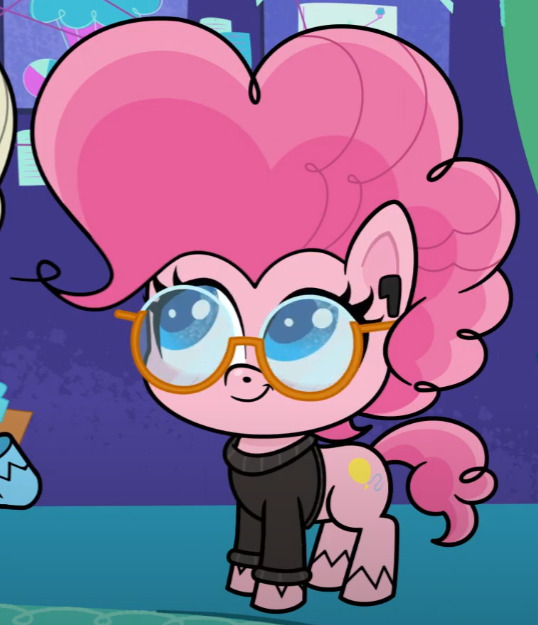
Pony Life: Keynote Pie - Pinkie dressed as Steve Jobs (I think?)
4 notes
·
View notes
Text
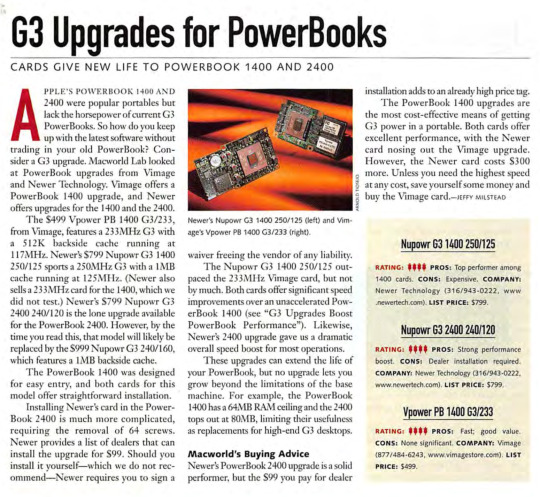
These days if you own a laptop—any laptop—and you would like it to have a newer, faster CPU, your only choice is to buy another laptop.
But back in the 90s, we had options.
Imagine that it's 1999 and you've got a Macintosh PowerBook 1400 that you paid $2499 for when it was released 3 years earlier. Adjusted for inflation, that's over $4700 at 2022 prices. You'd love one those speedy G3 processors, the ones that Steve Jobs is always calling "screamers" at his keynotes, but you can't afford to shell out another $2500 or more for a new machine. But for a mere $799 (less than half what a new laptop would cost) you could get a G3 upgrade card for your existing machine.
Obviously modern laptop design simply doesn't allow for this kind of modularity, but back when laptops were less for consumers and more for businesses, it made sense to offer it.
2 notes
·
View notes
Text
2007-01-09 Steve Jobs' Keynote - San Francisco, CA
2007-01-09 STEVE JOBS’ KEYNOTE – SAN FRANCISCO CA
2007-01-09. Long lines wrapped around the building in the pre-dawn hours, snaking there way through giant rooms that eventually lead to thousands of seats in an enormous darkened auditorium. This was not my first Steve Jobs’ keynote. I was at a Steve-note in January 2000 when MacOS X’s Aqua interface was introduced and Jobs dropped the “i” from…

View On WordPress
#2007#apple computer#iphone#macintosh#macworld#macworld expo 2007#nerd culture#nerd history#steve jobs#steve jobs keynote#travels
0 notes
Text
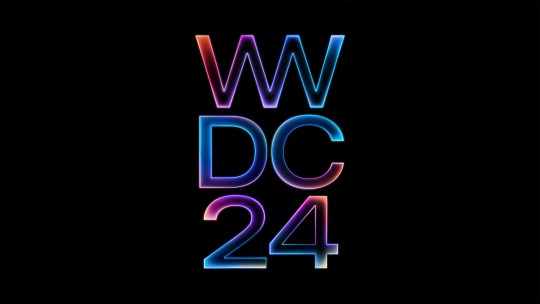
Apple WWDC 2024, set for June 10-14, promises to be ‘A(absolutely) I(incredible)’
Developers are the primary focus of Apple’s WWDC event for its various operating systems, as indicated by the name “D.” Several days ago, panels and workshops focusing on the various ecosystems were held at the Steve Jobs Theater on the company’s Cupertino campus. The event also serves as a launching pad for said ecosystems. Anticipate big announcements around iOS and iPadOS 18, macOS 15, and watchOS 11, among others. Seeing as how this year’s show will mark one year since the Vision Pro was announced, I would anticipate a LOT of new developers around the headset and its vision operating system. Updates to Apple Silicon and, perhaps, new Macs seem pretty likely as well. But Apple’s AI plans will almost certainly take center stage at the show this time out. WWDC seems like the most likely platform for such an announcement — and, perhaps, details on a rumored Google Gemini partnership for the iPhone. Joz’s sneaky backronym will no doubt only further speculation. Additional rumors have pointed to iOS 18 potentially being “the biggest” update in the operating system’s long history. You don’t just lean passively into generative AI and stop there, reports suggest. Instead, you use “AI tools that help manage your daily life.” Certainly, the notion of the AI smartphone isn’t Apple-specific. Samsung leaned heavily into the concept earlier this year with the launch of its Galaxy S24 line. Which also relied on Google’s Gemini efforts. The following month, Apple claimed that the new M3-powered MacBook Airs are the “World’s Best Consumer Laptop for AI,” mostly due to the neural processing units included in its first-party SoCs. Apple adds, “Developers and students will have the opportunity to celebrate in person at a special event at Apple Park on opening day.” This is likely a reference to the news-filled keynote that traditionally kicks off the show. Of course, things remain dramatically scaled down since the pre-pandemic days at the San Jose Convention Center. Fifty “winners” will be invited to the in-person Apple WWDC NUM0 event in Cupertino, as has always been the case. The event follows soon after Google I/O (May 14-15) and Microsoft Build (May 21-24). The announcement arrived less than a week after the Department of Justice announced. It is suing the hardware giant over claims of monopolistic practices surrounding the iPhone.
0 notes
Text
The Artwork Of Giving An Effective Presentation
This rule is basically useful for planning purposes—a 20-minute presentation should have someplace round 20 slides. Also, regularly giving your audience new data to feast on helps hold them engaged. Reduce, cut back, cut back, until you get to a single message, clearly described, which takes less than 1 minute to present. Delivering presentations is an on a daily basis art type that anybody can grasp.
stage presence
However, you probably can by no means actually understand how your viewers will feel and react. Storytelling is a strong way to connect along with your audience from the get-go, so take into consideration incorporating a story factor into your presentation to generate this connection. Creating a connection may be tough, particularly if you’re presenting on-line. However, you must find a approach to domesticate a bond to make your viewers genuinely excited about what you’re presenting. In quick, embody strong text and visuals to drive your points residence. As well as rising confidence and helping to calm preliminary nerves, undertake your personal presentation training by working towards beforehand.
Clarify your aims and work out the fabric you should obtain them. With all the following tips plus Simplified, you can brainstorm and build your presentation from scratch with out thinking too onerous or exerting an extreme quantity of effort. So, sign up right now and take step one in the path of changing into a confident and persuasive presenter.
Make certain you let your ardour for your presentation matter shine by way of every little thing else, even if you're nervous. By shifting your focus to your topic and why it matters to you, you can better come throughout as authentic and enthusiastic in your speech. Many nervous presenters transfer their bodies during speeches to cope with the strain. This will enhance your overall stage presence and stop you from pacing or swaying too much. When specializing in the altering dynamic of your speech’s storyline, you’ll want to discover the elements of your story that change all through the presentation. Think about what areas of the story aren't yet resolved and answer along with your current plan for change in your speech.
Among the completely different presentation methods, the principle ones are formal and formal. Their distinction is principally within the style of your supply and the info presentation strategies. The formal presentation is finest fitted to the business meetings or college degree, scientific presentations. The informal methods of presentation can greatest be used through the smaller conferences together with your group to debate business topics or, for instance, at a Ted-like speech event. From high quality visuals to a compelling speech, every little thing matters.
Rehearse your content material a quantity of instances to refine your delivery, tone, and timing. Practicing helps you turn out to be extra comfy with the fabric and minimizes the possibilities of stumbling during the precise presentation. Consider recording your self or practicing in front of a friend for constructive feedback. Steve Jobs, recognized for his masterful presentations, rehearsed his iconic iPhone launch keynote meticulously to ensure every word was perfectly timed. A structured presentation offers a roadmap for your audience to comply with. Begin with a compelling introduction that grabs attention, adopted by the primary content material, and wrap it up with a concise conclusion.
For each presentation you create, you should have an end objective and function in mind. Because by understanding your crowd’s interests, attention span and pain points, you’ll have the flexibility to connect them by way of your presentation. Plus, you’ll be in a better position to unravel their issues and add value to their lives.
A good presentation is one you may have practised and keeps the viewers involved throughout. You can obtain this by researching your chosen matter, so you've the required knowledge, as nicely as speaking clearly and confidently to ensure your viewers wants to keep listening to you. While it’s good to look at different presentations to get ideas you need to use, don’t become someone you’re not. Your presentation must be as distinctive as you, showcasing all your strengths in a method that no person else might copy. One way to include come across as more pleasant is using gestures to keep your viewers engaged.
Discover 4 methods you can deliver a presentation and what sort of skills and strategy they require. In most of these presentations, the speaker focuses on telling a narrative that engages the audience and reinforces the principle message. This kind of presentation is ideal for partaking and entertaining an audience. It helps to keep the audience interested and focused and could be a good way to strengthen the primary message. However, it may also be time-consuming to prepare a well-structured narrative.
You may also find it useful to contemplate tips on how to inform your story most effectively, and to use tales in your presentation to illustrate factors. There is more about this in our web page on writing your presentation. Keep that in mind, and your presentation skills will almost immediately enhance. For instance, if you’re giving a talk about the significance of perseverance, you could share a story about somebody who confronted numerous setbacks however refused to surrender. By sharing that story, you can make the idea of perseverance extra concrete and relatable to your viewers. By mastering the art of storytelling, you'll have the ability to deliver a powerful presentation that resonates with the audience and creates an enduring impression.
#public presentation skills#presentation skills#presence on stage#effective presentations#stage presence tips#fear of public speaking speech#overcoming the fear of public speaking#business presentation skills#stage presence
1 note
·
View note
Text
Love letter Recap from our Rise event!

Illustration by Aly Miller
It was a chilly morning on January 19th but that didn't keep the CreativeMornings/Milwaukee community from showing out at our inaugural reawakening event. Over one hundred of us reconnected at Hundred Acre, Milwaukee's largest indoor hydroponic farm. We danced to our RISE playlist, kept warm with Discourse coffee, met new friends, and reconnected with old ones after four long years.
"More people can come and access us than ever before in the world of agriculture. We're creating jobs and then there's exposure, education. It's income and knowledge. That's the solution to food insecurity."
Days following the event, Experience Milwaukee podcast invited our keynote speaker and venue host, Chris Corkery, and CreativeMornings lead speaker coach, Alea Cross, into the studio to capture the magic of Corkery's business, Hundred Acre. Hundred Acre is a unique urban farm providing a rapid response solution to food insecurity in the heart of Milwaukee.
Tune into Experience Milwaukee's episode on Spotify to learn what inspired Corkery to move to Milwaukee to start this business, how Hundred Acre is impacting the community, what's next, and how you can get involved.

This month we invited our chapter's first two annual partners to present a 30-second pitch! If you are interested in joining the fun or are curious to learn more about how partnering with CreativeMornings can uplift your business, let us know.
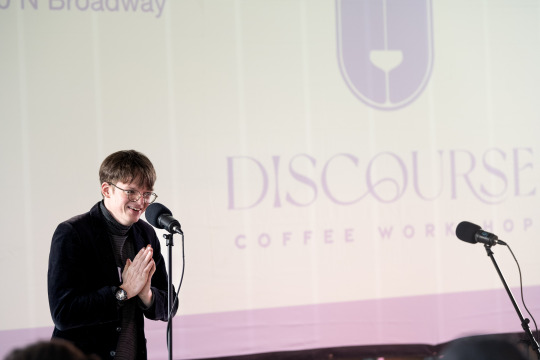
Ryan Castelaz is a wild dreamer who wears his heart on his sleeve. Having spent the last six years exploring the boundaries the coffee industry with Discourse Coffee, and more recently sharing much of this work with the world via his best-selling book, "The New Art of Coffee: From Morning Cup to Caffeine Cocktail," Ryan has now turned his gaze towards the world of cocktail bars, and specifically, how non-alcoholic bartending can be married with the world of modern mixology. His latest creative endeavor, The Agency, is now open Friday-Sunday, 6pm to late at 1020 N Broadway. Cheers!

Steve Glynn and Adam Derus have been avidly exploring Milwaukee for their entire lives, so it's a good thing they decided to make a podcast! Together, they share a wide range of hidden gems with their listeners, highlighting the special people and places that make up our incredible city. Always recorded with a sense of humor and occasionally over a few beers, this podcast is sure to keep you hip to all things Milwaukee.
Join the fun and subscribe to Experience Milwaukee wherever you get your podcasts. Visit textmke.com to get the inside scoop with a free, daily text about what's happening around Cream City.

Event day photos by Holly Schisler. Lots more love captured in our Flickr gallery.

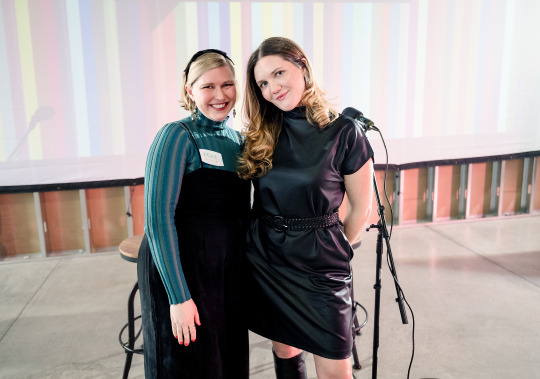

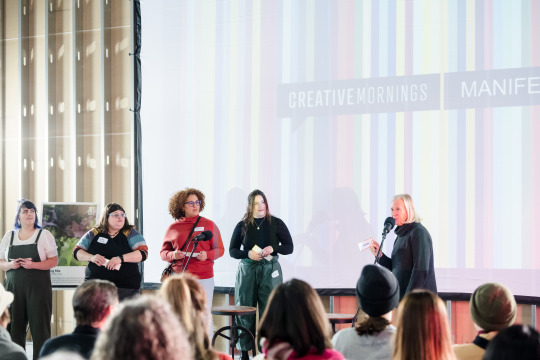


0 notes
Text
Copywriting Secrets Every Product Manager Should Know

opywriting is a skill that needs to be mastered in every position, and product managers are no exception. Copywriting is the skill of using words to influence, persuade, and connect with an audience. This article summarizes some copywriting secrets that product managers need to know. I hope it will be helpful to you.
In the fiercely competitive landscape HE Tuber of product management, product professionals are constantly striving to unlock the keys to success. Their roles cover a wide range of responsibilities, including strategic planning, market analysis and cross-functional collaboration. Among the many skills they master, there’s an often underrated secret that can improve performance and revolutionize your approach to product development and marketing: the art of copywriting. In this article, we’ll explore copywriting secrets that every product manager should know to understand its transformative impact on the industry.
At its core, copywriting is the skill of using words to influence, persuade, and connect with an audience. Product managers who embrace this secret sauce can craft compelling messages that resonate with stakeholders and customers. Whether you're presenting a product proposal to executives or creating marketing content for your target market, persuasive communications are key to driving purchase, support, and ultimately success.
1. When writing copy, you first need to understand your audience.
An important aspect of copywriting is knowing your audience inside out. Product managers who realize this secret understand that different stakeholders have different needs, concerns, and priorities. By tailoring communications and messaging to specific audiences, they can solve pain points and deliver value in a way that resonates deeply. This customer-centric approach fosters strong relationships and builds trust, which is critical to driving product adoption and loyalty.
For example:
Many movie promotions on the market will use the first example, but for viewers, there is no fixed concept to explain how awesome this blockbuster is. The copywriting is slightly modified and supported by corresponding data, which will make the audience want to find out more and want to see the film that took more than 2 billion pictures and took 9 years to complete.
2. Use storytelling situations to establish emotional connections and construct scene-based expressions
One of the most powerful applications of copywriting secrets lies in the art of storytelling. Humans are wired to connect with stories on an emotional level, making them a valuable tool for product managers. By integrating storytelling into contextual communications, product managers can evoke emotion, inspire action, and have a lasting impact on their audiences. Whether telling the journey of product development or sharing customer success stories, engaging narratives leave a lasting impression and attract a loyal following.
For example: Apple co-founder and former CEO Steve Jobs was a product manager who built emotional connections through storytelling and scenario-based expression.
Steve Jobs was famous for his ability to captivate audiences and create emotional connections with customers during product demonstrations. One of the most famous examples of his storytelling and scene-based expression was the launch of the first-generation iPhone on January 9, 2007.
During his keynote address, Jobs took the audience on a journey as he explained that Apple was about to launch three revolutionary products: a widescreen iPod with touch controls, a revolutionary mobile phone, and a breakthrough Internet communications device. He then dramatically revealed that they weren't three separate devices, but one product: the iPhone.
In demonstrating the capabilities of the iPhone, Jobs used storytelling to explain how it would change the way people communicate, consume media, and interact with technology. He showed how easy the device is to use, emphasizing its intuitive interface and how seamlessly it integrates various functions.
Throughout the presentation, Jobs crafted scenes that showed the emotional impact of the iPhone. For example, he demonstrated how to easily scroll through a photo gallery with the flick of a finger, instantly triggering a nostalgic response in the audience. He also showed how the iPhone can access Google Maps and find nearby restaurants, emphasizing the convenience and connectivity it brings to users' lives.
By using storytelling and scenario-based expressions, Steve Jobs was able to evoke excitement, wonder, and a sense of connection between the audience and the product. His speech not only demonstrated the capabilities of the iPhone, but also conveyed his vision of how this revolutionary device will improve people's lives. As a result, the emotional connections he made played a major role in the iPhone's massive success and its impact on the tech industry.
3. Drive action with effective calls to action
A well-crafted call to action (CTA) is the core of copywriting. Product managers who have mastered this secret art can design CTAs that inspire customers to take a desired action, whether that’s purchasing, signing up for a trial, or providing feedback. A powerful call-to-action combines persuasive language with a clear and direct message, leaving no room for ambiguity and prompting an immediate response.
When using software, we often encounter: Start a free trial now, Start a personalized plan (fitness and wellness platforms often use this CTA to encourage users to sign up for a personalized exercise or nutrition plan), Call now for a free consultation, Upgrade to premium version etc. These are all examples of using calls to action to entice users to take the next step.
4. Consistency of brand information
Consistency in messaging is the hallmark of a successful brand, and product managers play a vital role in shaping this image. Embracing the secrets of copywriting means intentionally maintaining a consistent brand voice across all touchpoints. From product descriptions to marketing materials, a unified message can enhance brand recognition, instill trust and solidify your brand’s position in the market.
The copywriting on the following platforms perfectly explains their product brand concepts;
Nike: “Just Do It” Nike’s iconic slogan is a perfect example of expressing your brand’s essence through copy. It encapsulates the brand’s determination, drive and the idea that anyone can achieve greatness through action.
Coca-Cola: “Open Happiness” Coca-Cola’s “Open Happiness” slogan expresses the brand’s commitment to spreading joy, happiness and positive moments among people. It creates an emotional connection with the audience and associates the brand with a positive experience.
Starbucks : “Experience the Starbucks Reserve Roastery” Starbucks uses descriptive and experiential copy to promote its premium Reserve Roastery. The copy emphasizes the unique experience of visiting these stores, emphasizing craft and specialty coffee products.
Tesla : “The Safest Car in the World” Tesla’s copy focuses on safety, reliability, and cutting-edge technology. By claiming to be the "world's safest car," Tesla has established itself as a leader in automotive safety.
Google : “Organize the world’s information” Google’s mission statement is a powerful piece of copy that outlines the brand’s commitment to making information accessible and organized for everyone.
5. The importance of copywriting in product management
1. Drive customer engagement and conversion
Copywriting is a powerful tool for driving customer engagement and increasing conversions. A study conducted by HubSpot found that businesses that wrote effective copy on their websites had higher conversion rates. Persuasive and well-crafted copy can grab a potential customer’s attention, instill trust in your product, and encourage them to take the desired action, whether that’s making a purchase, signing up for a trial, or subscribing to a service.
2. Build brand image and loyalty
As mentioned above, consistent and compelling copy plays a key role in shaping your brand’s image and building customer loyalty. A Nielsen survey shows that 59% of consumers prefer to buy new products from brands they are familiar with. Product managers who understand this secret can use copywriting to create a unique brand voice that resonates with their target audience. A consistent brand voice drives brand recognition and trust, which leads to increased customer loyalty and advocacy.
3. Use storytelling to build emotional connections
Emotional connections play a vital role in customer decision-making. Neuroscientists have found that storytelling activates various areas of the brain, increasing engagement and making information easier to remember. Savvy product managers leverage storytelling through effective copywriting to evoke emotion and create a deeper connection with their audience. By sharing authentic stories and customer success stories, product managers can build empathy and loyalty, strengthening the connection between the brand and its customers.
4. Strengthen collaboration and communication
Effective communication is crucial for product managers, especially when working with cross-functional teams. Copywriting skills enable product managers to clearly communicate their vision, eliminate misunderstandings, and streamline the development process. A McKinsey study found that effective communication and collaboration within an organization can increase productivity by up to 25%. Through concise and persuasive copy, product managers can coordinate their teams and ensure everyone is working toward a common goal.
In conclusion, the secrets of copywriting have huge potential for every product manager striving for success in today’s competitive market. Backed by data and analytics, mastering the art of copywriting can clearly increase customer engagement, boost conversions, and increase brand loyalty. By leveraging storytelling to create emotional connections and maintain a consistent brand voice, product managers can shape their brand image and build lasting relationships with their audiences.
Additionally, effective copywriting improves collaboration, aligns cross-functional teams, and streamlines the product development process. With this secret, product managers become powerful communicators, engaging audiences and driving product and brand success.
As the industry evolves, product managers who embrace the secrets of copywriting will be at the forefront of innovation, make a lasting impact on their organizations, and pave the way for a prosperous future in the dynamic world of product management.
0 notes
Text
Copywriting Secrets Every Product Manager Should Know

opywriting is a skill that needs to be mastered in every position, and product managers are no exception. Copywriting is the skill of using words to influence, persuade, and connect with an audience. This article summarizes some copywriting secrets that product managers need to know. I hope it will be helpful to you.
In the fiercely competitive landscape HE Tuber of product management, product professionals are constantly striving to unlock the keys to success. Their roles cover a wide range of responsibilities, including strategic planning, market analysis and cross-functional collaboration. Among the many skills they master, there’s an often underrated secret that can improve performance and revolutionize your approach to product development and marketing: the art of copywriting. In this article, we’ll explore copywriting secrets that every product manager should know to understand its transformative impact on the industry.
At its core, copywriting is the skill of using words to influence, persuade, and connect with an audience. Product managers who embrace this secret sauce can craft compelling messages that resonate with stakeholders and customers. Whether you're presenting a product proposal to executives or creating marketing content for your target market, persuasive communications are key to driving purchase, support, and ultimately success.
1. When writing copy, you first need to understand your audience.
An important aspect of copywriting is knowing your audience inside out. Product managers who realize this secret understand that different stakeholders have different needs, concerns, and priorities. By tailoring communications and messaging to specific audiences, they can solve pain points and deliver value in a way that resonates deeply. This customer-centric approach fosters strong relationships and builds trust, which is critical to driving product adoption and loyalty.
For example:
Many movie promotions on the market will use the first example, but for viewers, there is no fixed concept to explain how awesome this blockbuster is. The copywriting is slightly modified and supported by corresponding data, which will make the audience want to find out more and want to see the film that took more than 2 billion pictures and took 9 years to complete.
2. Use storytelling situations to establish emotional connections and construct scene-based expressions
One of the most powerful applications of copywriting secrets lies in the art of storytelling. Humans are wired to connect with stories on an emotional level, making them a valuable tool for product managers. By integrating storytelling into contextual communications, product managers can evoke emotion, inspire action, and have a lasting impact on their audiences. Whether telling the journey of product development or sharing customer success stories, engaging narratives leave a lasting impression and attract a loyal following.
For example: Apple co-founder and former CEO Steve Jobs was a product manager who built emotional connections through storytelling and scenario-based expression.
Steve Jobs was famous for his ability to captivate audiences and create emotional connections with customers during product demonstrations. One of the most famous examples of his storytelling and scene-based expression was the launch of the first-generation iPhone on January 9, 2007.
During his keynote address, Jobs took the audience on a journey as he explained that Apple was about to launch three revolutionary products: a widescreen iPod with touch controls, a revolutionary mobile phone, and a breakthrough Internet communications device. He then dramatically revealed that they weren't three separate devices, but one product: the iPhone.
In demonstrating the capabilities of the iPhone, Jobs used storytelling to explain how it would change the way people communicate, consume media, and interact with technology. He showed how easy the device is to use, emphasizing its intuitive interface and how seamlessly it integrates various functions.
Throughout the presentation, Jobs crafted scenes that showed the emotional impact of the iPhone. For example, he demonstrated how to easily scroll through a photo gallery with the flick of a finger, instantly triggering a nostalgic response in the audience. He also showed how the iPhone can access Google Maps and find nearby restaurants, emphasizing the convenience and connectivity it brings to users' lives.
By using storytelling and scenario-based expressions, Steve Jobs was able to evoke excitement, wonder, and a sense of connection between the audience and the product. His speech not only demonstrated the capabilities of the iPhone, but also conveyed his vision of how this revolutionary device will improve people's lives. As a result, the emotional connections he made played a major role in the iPhone's massive success and its impact on the tech industry.
3. Drive action with effective calls to action
A well-crafted call to action (CTA) is the core of copywriting. Product managers who have mastered this secret art can design CTAs that inspire customers to take a desired action, whether that’s purchasing, signing up for a trial, or providing feedback. A powerful call-to-action combines persuasive language with a clear and direct message, leaving no room for ambiguity and prompting an immediate response.
When using software, we often encounter: Start a free trial now, Start a personalized plan (fitness and wellness platforms often use this CTA to encourage users to sign up for a personalized exercise or nutrition plan), Call now for a free consultation, Upgrade to premium version etc. These are all examples of using calls to action to entice users to take the next step.
4. Consistency of brand information
Consistency in messaging is the hallmark of a successful brand, and product managers play a vital role in shaping this image. Embracing the secrets of copywriting means intentionally maintaining a consistent brand voice across all touchpoints. From product descriptions to marketing materials, a unified message can enhance brand recognition, instill trust and solidify your brand’s position in the market.
The copywriting on the following platforms perfectly explains their product brand concepts;
Nike: “Just Do It” Nike’s iconic slogan is a perfect example of expressing your brand’s essence through copy. It encapsulates the brand’s determination, drive and the idea that anyone can achieve greatness through action.
Coca-Cola: “Open Happiness” Coca-Cola’s “Open Happiness” slogan expresses the brand’s commitment to spreading joy, happiness and positive moments among people. It creates an emotional connection with the audience and associates the brand with a positive experience.
Starbucks : “Experience the Starbucks Reserve Roastery” Starbucks uses descriptive and experiential copy to promote its premium Reserve Roastery. The copy emphasizes the unique experience of visiting these stores, emphasizing craft and specialty coffee products.
Tesla : “The Safest Car in the World” Tesla’s copy focuses on safety, reliability, and cutting-edge technology. By claiming to be the "world's safest car," Tesla has established itself as a leader in automotive safety.
Google : “Organize the world’s information” Google’s mission statement is a powerful piece of copy that outlines the brand’s commitment to making information accessible and organized for everyone.
5. The importance of copywriting in product management
1. Drive customer engagement and conversion
Copywriting is a powerful tool for driving customer engagement and increasing conversions. A study conducted by HubSpot found that businesses that wrote effective copy on their websites had higher conversion rates. Persuasive and well-crafted copy can grab a potential customer’s attention, instill trust in your product, and encourage them to take the desired action, whether that’s making a purchase, signing up for a trial, or subscribing to a service.
2. Build brand image and loyalty
As mentioned above, consistent and compelling copy plays a key role in shaping your brand’s image and building customer loyalty. A Nielsen survey shows that 59% of consumers prefer to buy new products from brands they are familiar with. Product managers who understand this secret can use copywriting to create a unique brand voice that resonates with their target audience. A consistent brand voice drives brand recognition and trust, which leads to increased customer loyalty and advocacy.
3. Use storytelling to build emotional connections
Emotional connections play a vital role in customer decision-making. Neuroscientists have found that storytelling activates various areas of the brain, increasing engagement and making information easier to remember. Savvy product managers leverage storytelling through effective copywriting to evoke emotion and create a deeper connection with their audience. By sharing authentic stories and customer success stories, product managers can build empathy and loyalty, strengthening the connection between the brand and its customers.
4. Strengthen collaboration and communication
Effective communication is crucial for product managers, especially when working with cross-functional teams. Copywriting skills enable product managers to clearly communicate their vision, eliminate misunderstandings, and streamline the development process. A McKinsey study found that effective communication and collaboration within an organization can increase productivity by up to 25%. Through concise and persuasive copy, product managers can coordinate their teams and ensure everyone is working toward a common goal.
In conclusion, the secrets of copywriting have huge potential for every product manager striving for success in today’s competitive market. Backed by data and analytics, mastering the art of copywriting can clearly increase customer engagement, boost conversions, and increase brand loyalty. By leveraging storytelling to create emotional connections and maintain a consistent brand voice, product managers can shape their brand image and build lasting relationships with their audiences.
Additionally, effective copywriting improves collaboration, aligns cross-functional teams, and streamlines the product development process. With this secret, product managers become powerful communicators, engaging audiences and driving product and brand success.
As the industry evolves, product managers who embrace the secrets of copywriting will be at the forefront of innovation, make a lasting impact on their organizations, and pave the way for a prosperous future in the dynamic world of product management.
0 notes
Text
The point of the above observations, however, is to emphasize what many also forget, which is that these changes, in addition to being massive and transformational, were also unexpected and unplanned.
A college senior who set up an account on thefacebook.com in 2004 to look up classmates probably didn’t predict that the average modern user would spend around two hours per day on social media and related messaging services, with close to half that time dedicated to Facebook’s products alone. Similarly, a first adopter who picked up an iPhone in 2007 for the music features would be less enthusiastic if told that within a decade he could expect to compulsively check the device eighty-five times a day—a “feature” we now know Steve Jobs never considered as he prepared his famous keynote. These changes crept up on us and happened fast, before we had a chance to step back and ask what we really wanted out of the rapid advances of the past decade.
0 notes